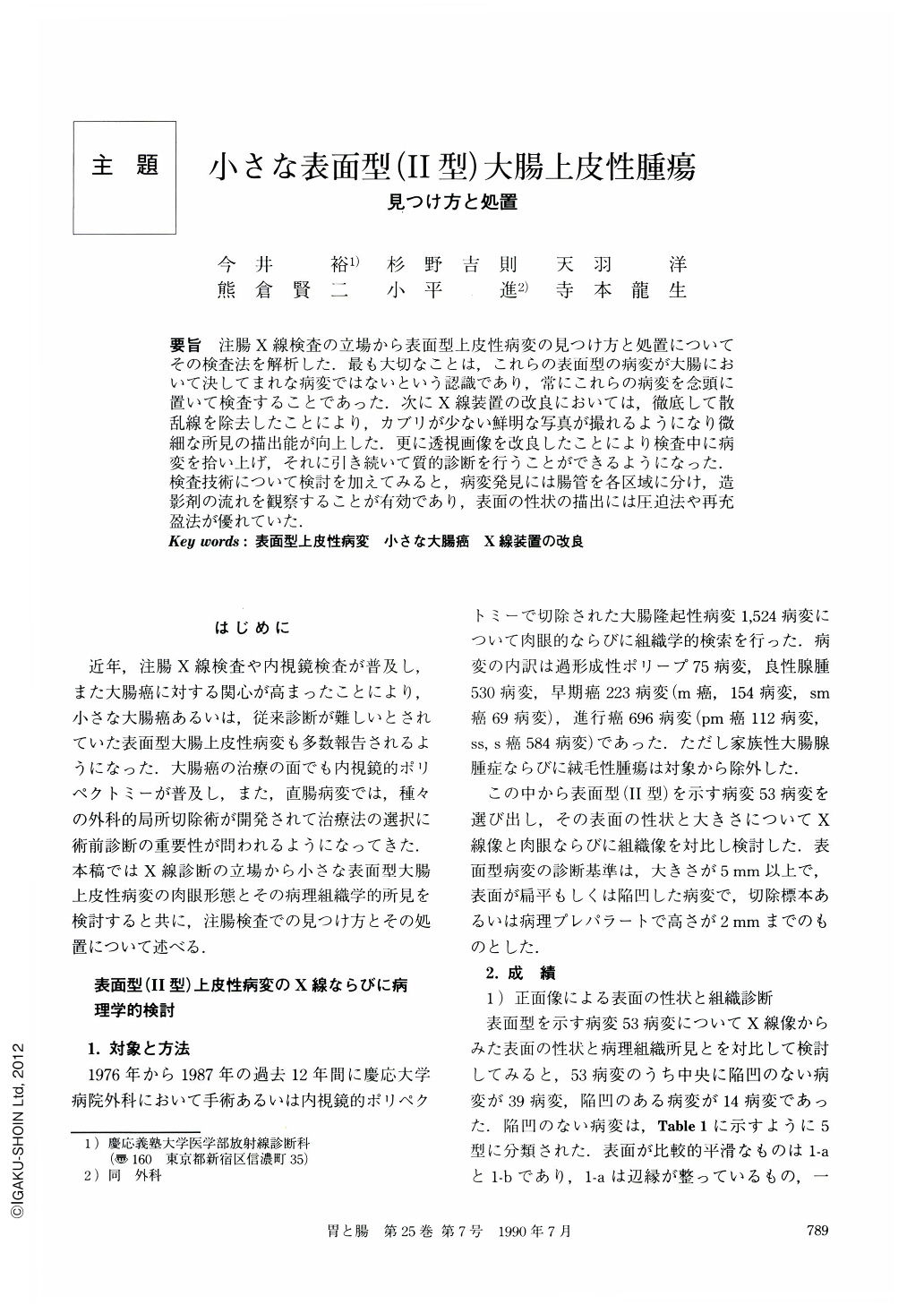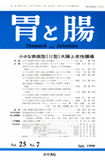Japanese
English
- 有料閲覧
- Abstract 文献概要
- 1ページ目 Look Inside
要旨 注腸X線検査の立場から表面型上皮性病変の見つけ方と処置についてその検査法を解析した.最も大切なことは,これらの表面型の病変が大腸において決してまれな病変ではないという認識であり,常にこれらの病変を念頭に置いて検査することであった.次にX線装置の改良においては,徹底して散乱線を除去したことにより,カブリが少ない鮮明な写真が撮れるようになり微細な所見の描出能が向上した.更に透視画像を改良したことにより検査中に病変を拾い上げ,それに引き続いて質的診断を行うことができるようになった.検査技術について検討を加えてみると,病変発見には腸管を各区域に分け,造影剤の流れを観察することが有効であり,表面の性状の描出には圧迫法や再充盈法が優れていた.
Recent studies using radiologic or endoscopic techniques have tacked the problem of early detection of superficial type lesion (flat elevation) in the large intestine. In this paper, 53 superficial type lesions, which were flat plaque or carpet-like lesions, were selected and analyzed regarding their surface configuration and profile view findings on the radiographs. The definition of a superficial type lesion in this series is a sessile lesion that has a relatively flat surface and a height of 2 mm or less in the resected specimen or on the radiograph.
The surface configuration of the 53 flat elevations studied radiographically is illustrated in Tables 1 & 2. The surface patterns of 39 lesions, which were lesions without central depression, were classified into five groups (Table 1). These categories were important because 1-c lesions tended to be adenomatous and 1-d lesions tended to be carcinomatous. The other 14 flat elevations with central depression were also analyzed. The surface patterns were classified into four groups (Table 2). Some lesions with pattern 2-a were benign, however all other cases were cancerous without exception. The basal deformity in the profile view was classified into four groups (Table 3). Most lesions which had semilunar shape and trapezoid deformity were cancers invading the submucosa or deeper colonic wall. The difference of the basal deformity in the profile view regarded as the sign of malignancy from the basal indentation due to the result of geometric function was discussed.
Most cases of flat elevation in the large intestine in this series were discovered during the past 5 years. There have been some improvements in equipments and technical approach. First of all, examiners should always think about the existence of flat elevations in the large intestine. Secondly, examiners should fluoroscopically observe each segment of the intestine separately, from the rectum to the terminal ileum, as in endoscopic examination. Thirdly, examiners should observe the barium flow across the entire mucosal surface of the segment carefully on the fluoroscopic image and manipulate the barium pool across the anterior and posterior wall. Recently, we have been using a special grid for fluoroscopy (a low-ratio grid) which is fixed in front of a image intensifier, and another grid for radiography (a high-ratio grid) which is fixed to the moving frame below the film cassette carriage. This system is quite useful to identify the lesion fluoroscopically.
The therapeutic approach to epithelial lesions of the large intestine depending on the radiographic findings is illustrated in Figure 5.

Copyright © 1990, Igaku-Shoin Ltd. All rights reserved.


